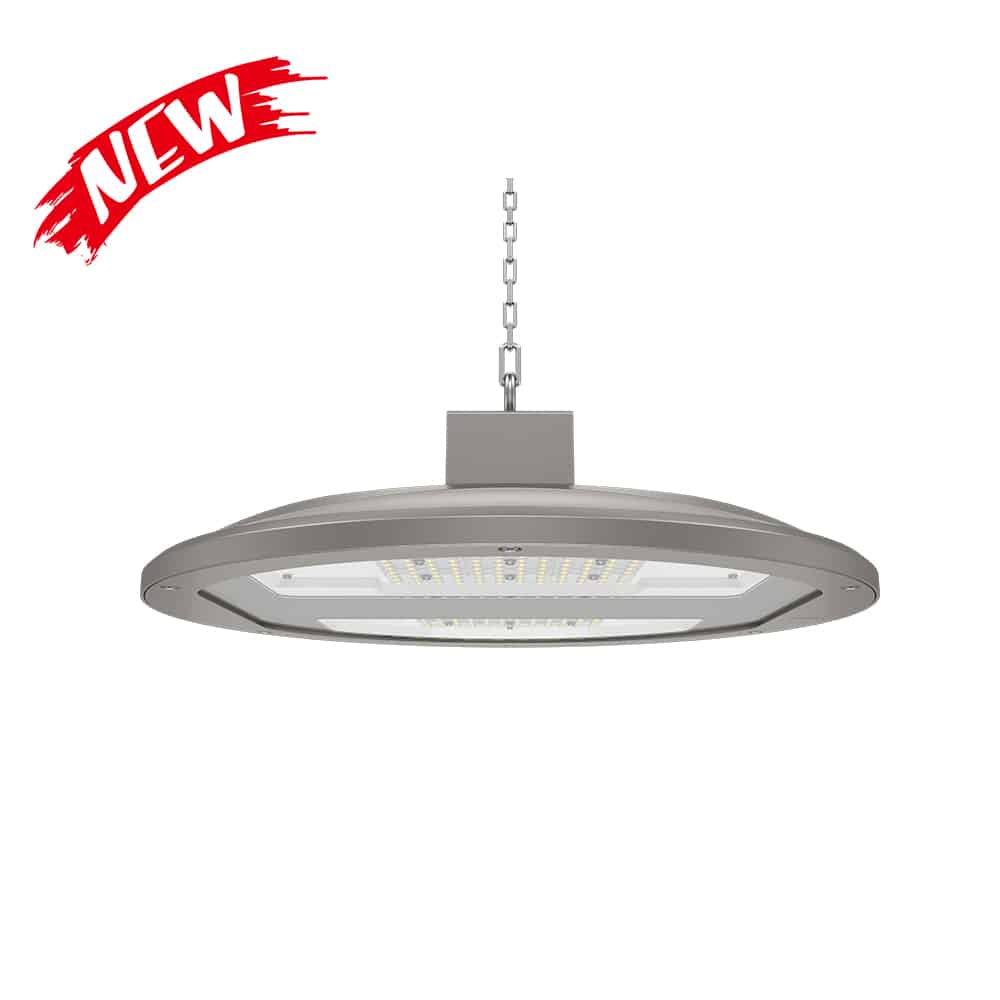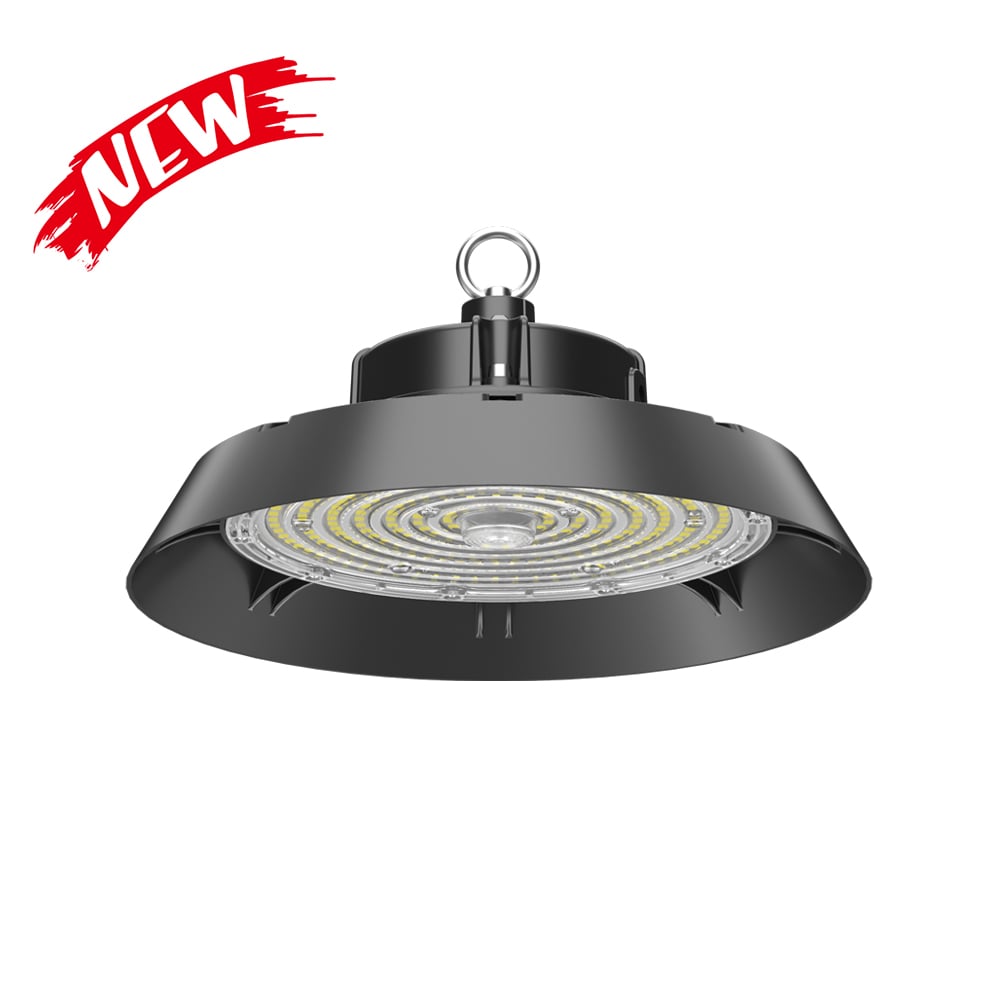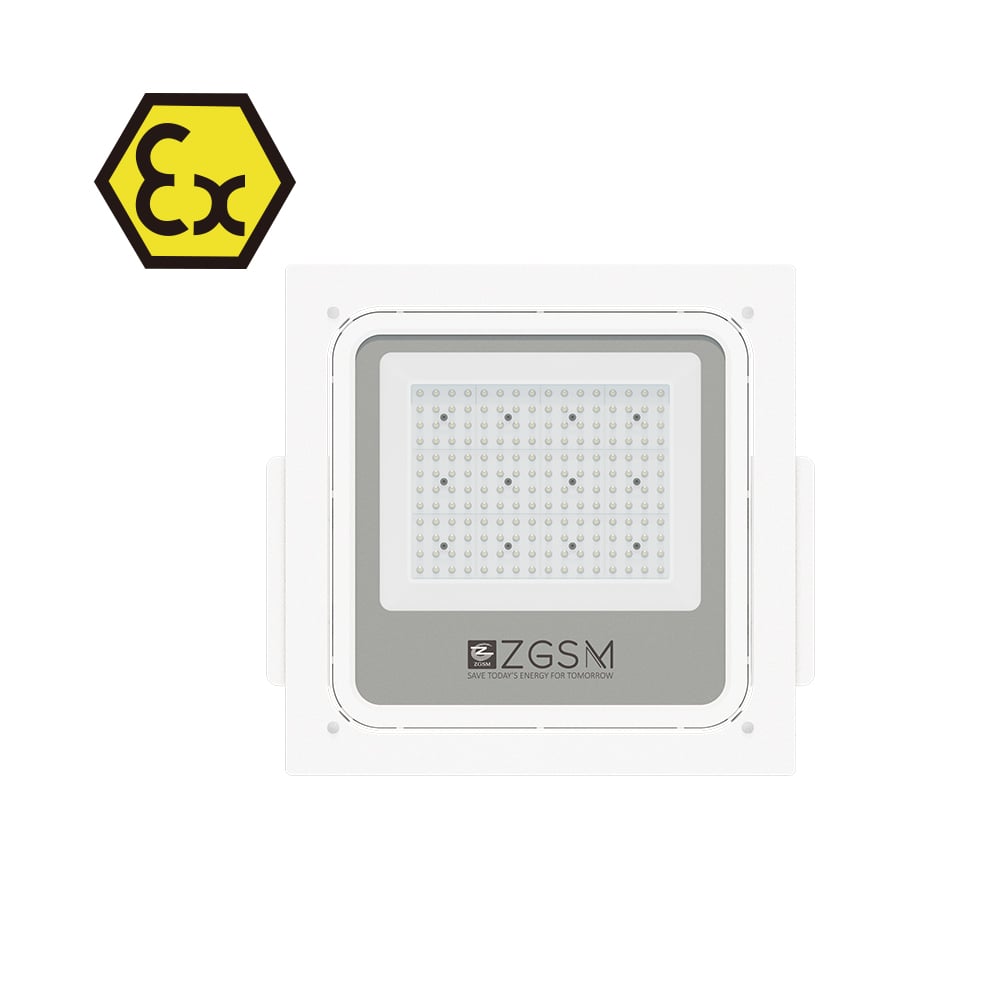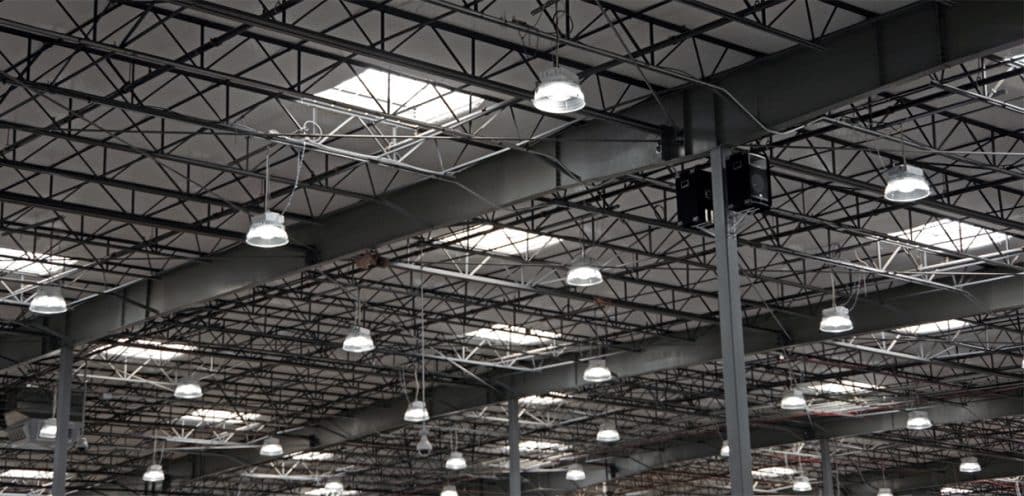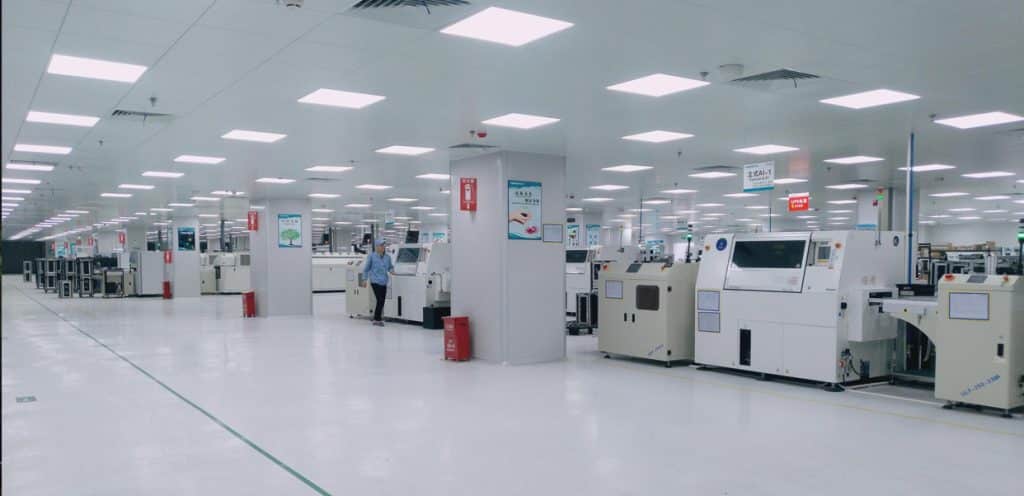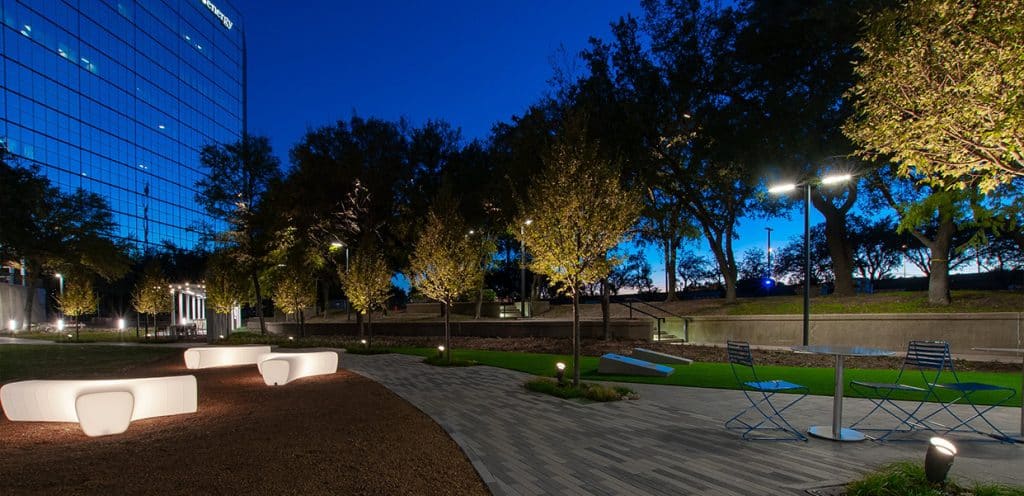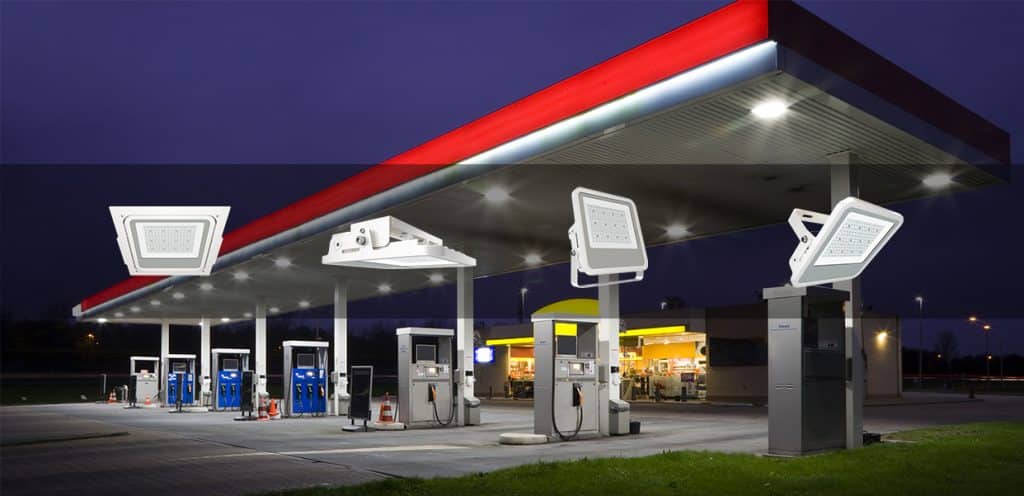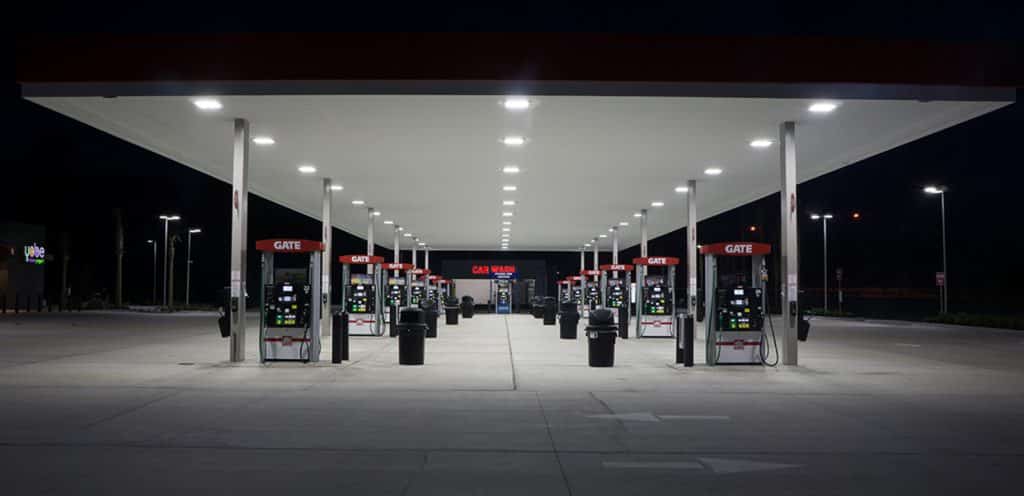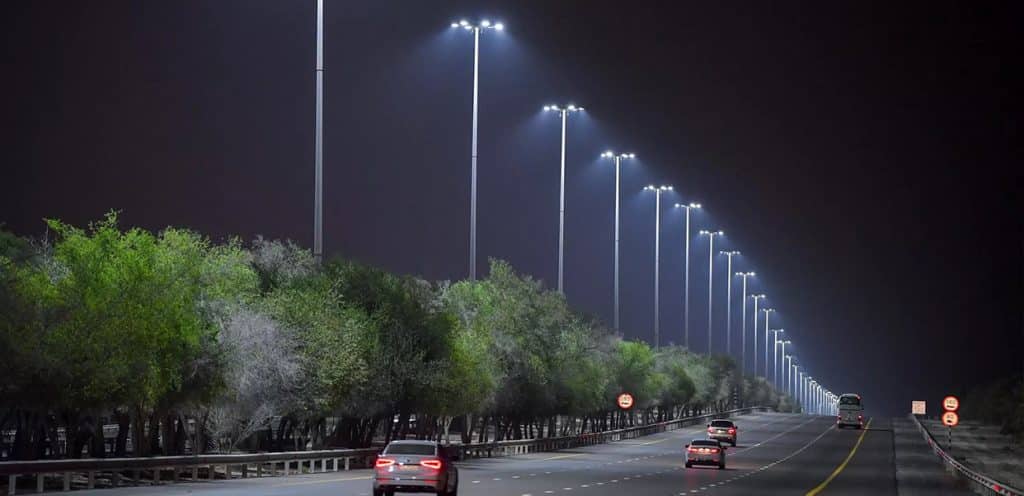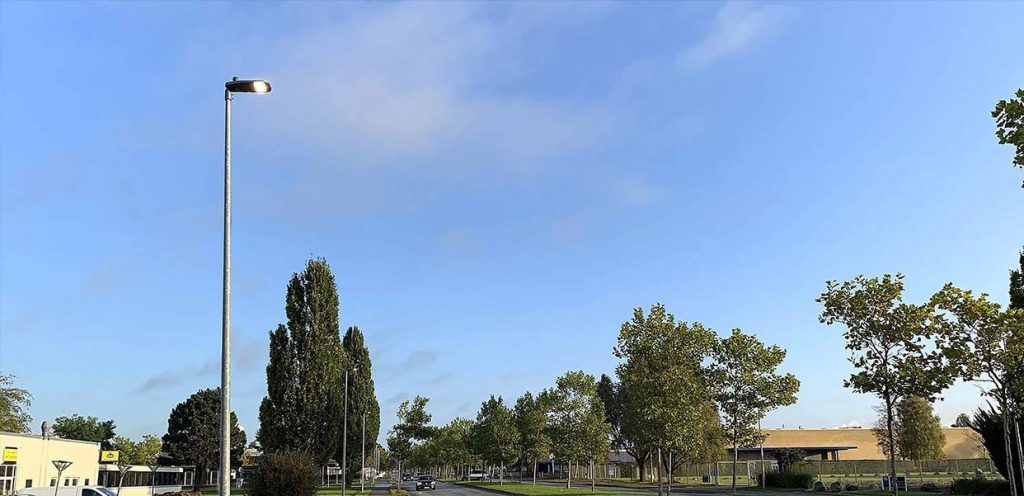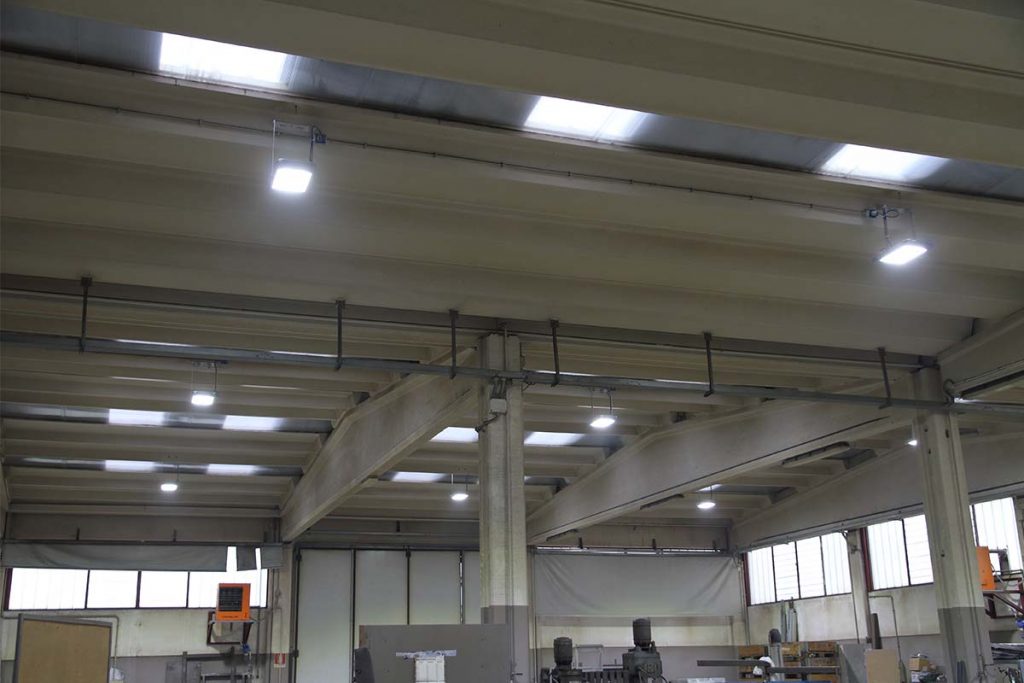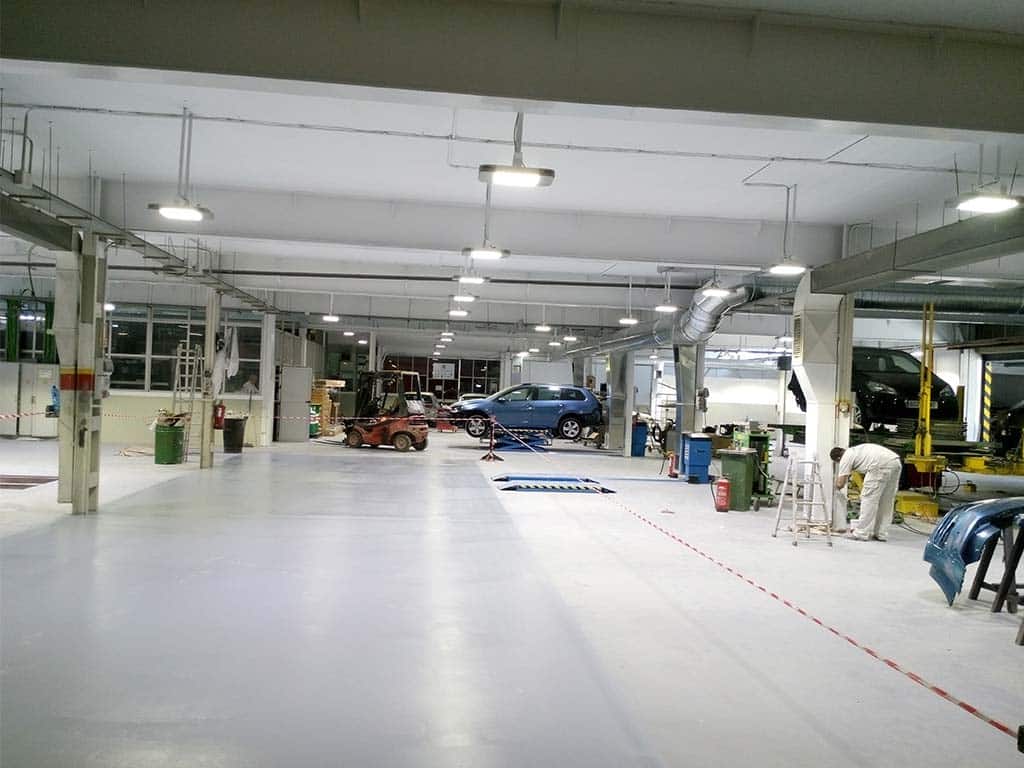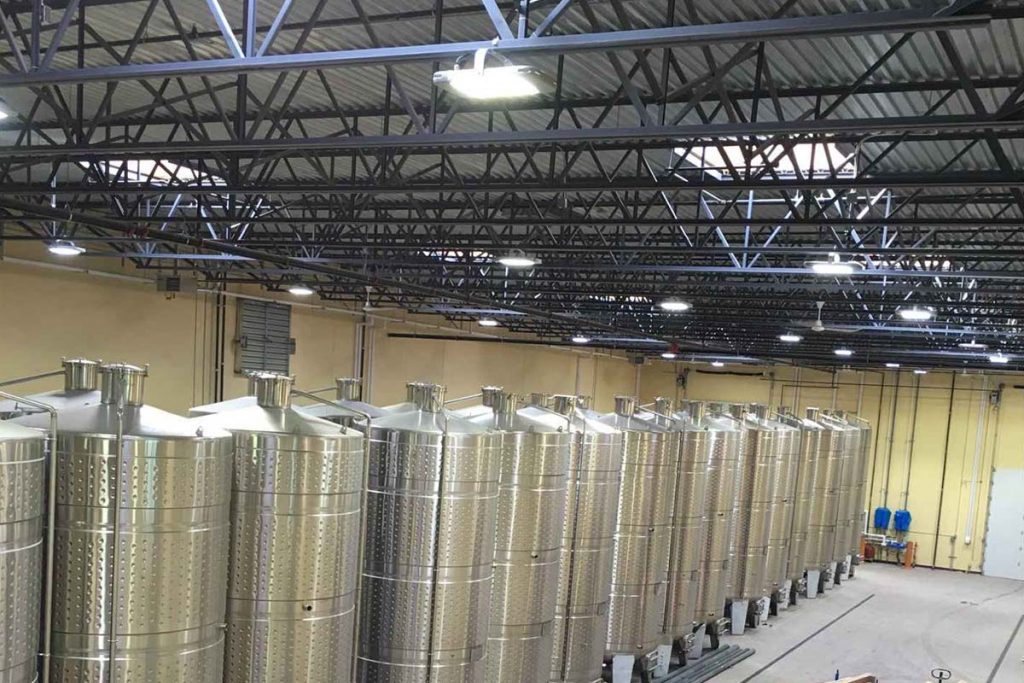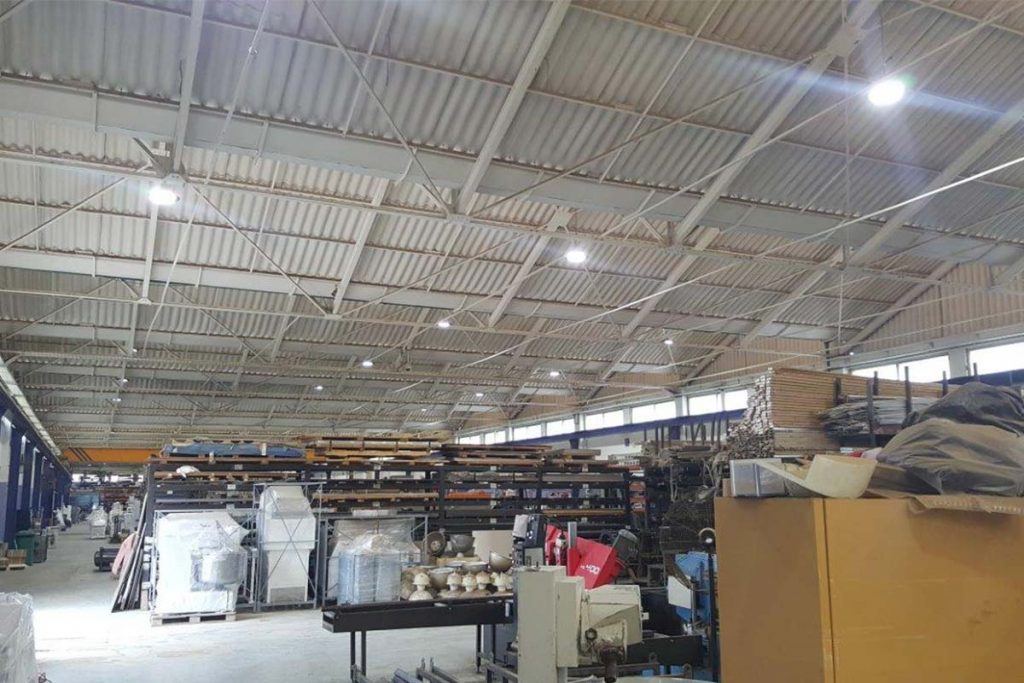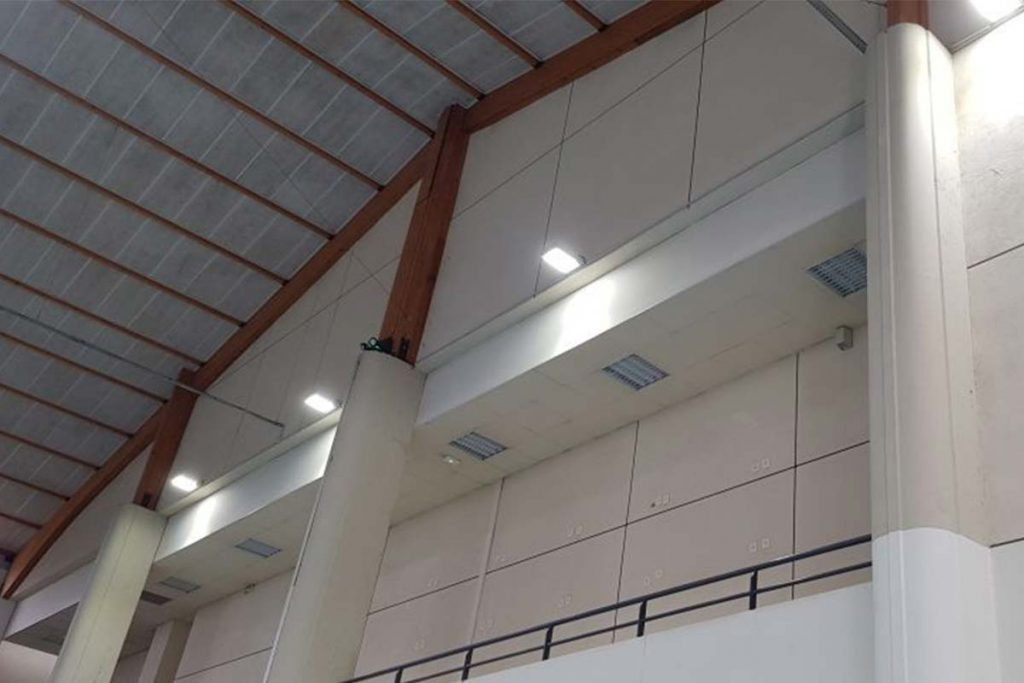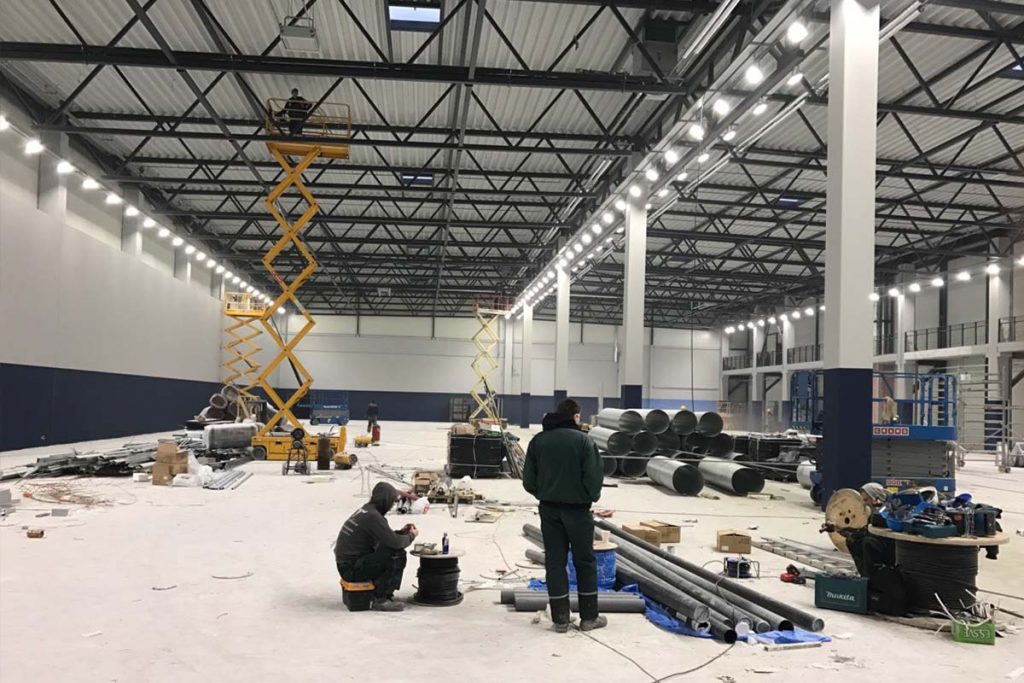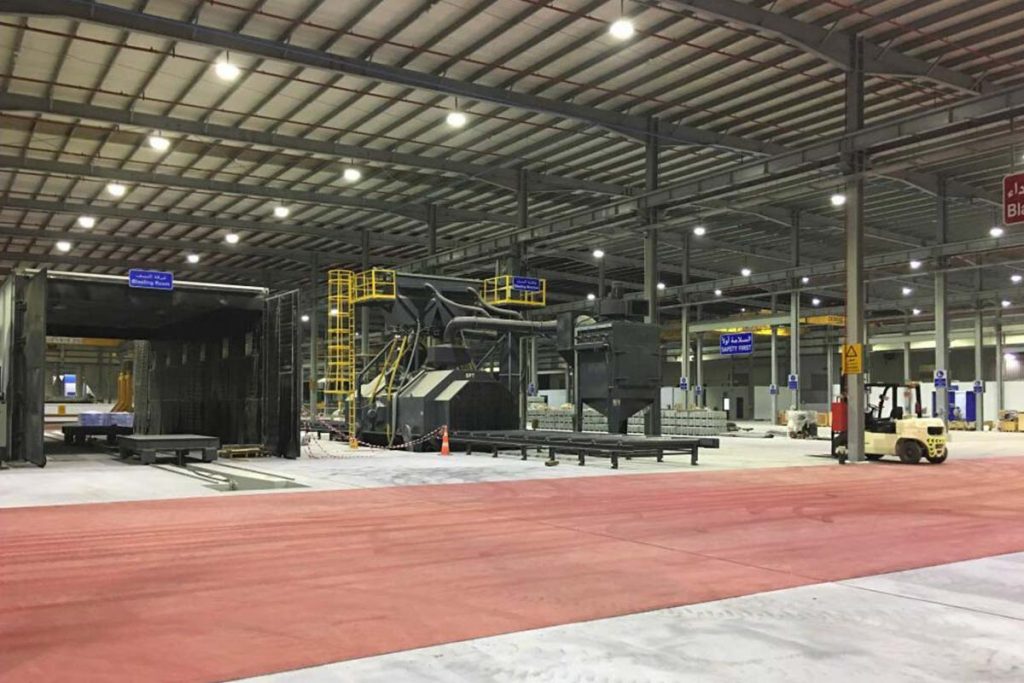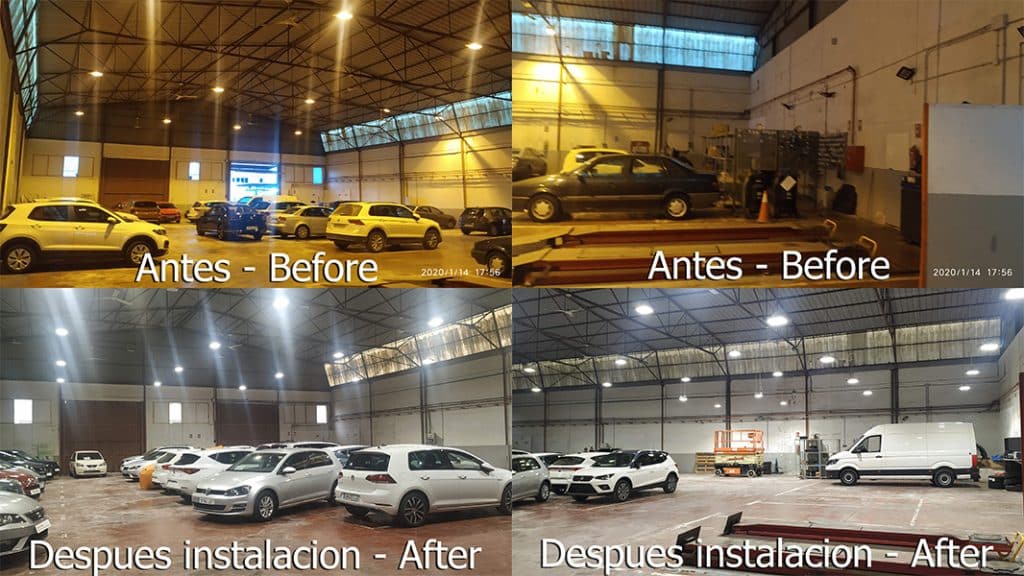Commercial lighting control – Warehouse lighting
Introduction
LED luminaires are proving to be a breakthrough invention – due to their low power consumption, fast start-up times and high lighting quality. These lights really help consumers save a lot on energy bills and get better light in their homes, businesses and outdoor areas. With the rise of electricity prices, energy saving and green energy are the future development trends. Enterprises have begun to find more cost-effective and energy-saving ways to use LED lamps. At the same time, how to achieve more effective control of LED lamps is also the direction of manufacturers and engineers. Lighting control came into being. High bay light is used as indoor lighting, and the available lighting controls include microwave, Dali and Zigbee control, etc. Through these commercial lighting control methods, the high bay light ( Watch the video of the UFO LED high bay light. ) can be better intelligently controlled and energy-saving. This article mainly makes a detailed introduction on the application of the three technologies in warehouse lighting.
Warehouse lighting requirements
Warehouse lighting is crucial for workers to efficiently navigate and complete tasks in a safe environment. There are several lighting requirements that need to be considered when designing and installing warehouse lighting systems. Firstly, the lighting needs to provide adequate illumination for workers to carry out their duties without eye strain or accidents. It needs to be energy-efficient and meet local building codes and safety regulations. The lighting fixtures should also be durable, long-lasting and able to withstand harsh warehouse environments. The type of lighting chosen may depend on the activities taking place in the warehouse – for example, high-ceilinged warehouses may require high-bay lighting whereas low-ceilinged warehouses may benefit from linear lighting. Furthermore, lighting controls such as occupancy sensors and daylight harvesting can be used to reduce energy consumption and improve comfort levels. Ultimately, proper warehouse lighting can enhance productivity, reduce costs, and create a safer workplace.
Benefit of lighting control for commercial area
There are several benefits to commercial lighting controls in warehouse lighting. However, among the most important we think there are 5 points, including improving energy efficiency, prolonging the service life of lamps, adjusting brightness according to work needs, setting corresponding strategies in advance and enhancing security.
- To improve energy efficiency. Lighting in commercial buildings accounts for a large proportion of energy consumption, and a large part of it is non-essential lighting. If luminaires could be dimmed or turned off based on occupancy or available daylight, not only could the user be satisfied, but electrical energy consumption could be significantly reduced.
- Extend the life of lamps. If it is not necessary to reduce the brightness of the lamps or turn off the lamps, not only can the lamps not work at full load, but also can shorten the daily use time of the lamps, which will undoubtedly be of great help to prolong the service life of the lamps.
- Adjust brightness according to work needs. For different tasks, the luminaire should be adjusted to the light level suitable for performing the task. For example, warehouses require high illuminance during loading and unloading. Conversely, when there is no work to be done, low light levels or simply turning off lights is a better option.
- Set the lighting strategy in advance. If the warehouse or workshop has a fixed work and rest time, we can prepare the lighting program of the lamps in advance. For example, during rest time, the lamps can be turned off or work at a very low brightness; during working hours, the lamps return to full power to meet lighting requirements.
- Enhanced security. For example, indoor lights will be automatically turned on between dusk and dawn, or lamps will be turned on in rainy days to ensure lighting requirements, thus reducing accidents caused by insufficient lighting.
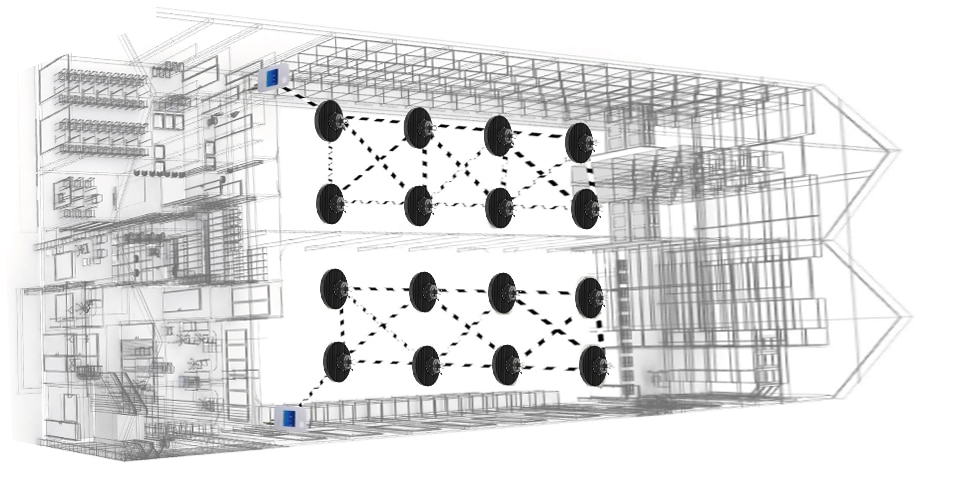
Besides above benefits of lighting control, one of the biggest benefits of LED high bay lighting controls is the ability to access your system from almost anywhere. Most commercial lighting control systems are smart, which means that the lighting system can be integrated with your smartphone, tablet or laptop, allowing you to monitor, update and adjust your lighting schedule anytime, anywhere. Because of this, more and more commercial lighting requires intelligent lighting control.
High bay light with motion sensor
200w LED high bay light can well replace 400w to 600w traditional lamps. It can be seen that under the same lighting intensity, the energy consumption of traditional lamps is 2-3 times that of LED high bay lamps. We can see that LED lamps are already very energy-saving, but what if we can make our LED lamps more energy-efficient? If we add a motion sensor to the high bay light, we can save an additional 30-50% in power consumption.
The way it works is that these motion sensors will detect the presence of movements within a given range. When the motion sensor detects movements and transmits a signal (0-10V) to the LED power supply (control unit), the light will turn on, turn up, or adjust the brightness. On the contrary, the light fixture does not detect motion after a period of time set by the user, and the controller judges that the space is empty, and it will turn off the light fixture. This is why it’s also called occupancy sensors. This is the easiest way to properly illuminate each space without worrying about wasting energy by leaving lights on all the time, while providing enough light for occupants when necessary. High bay light with motion sensor ensures your lighting is accurate and controlled automatically.
The picture below is a schematic diagram of the working principle when the high bay light is combined with the PIR sensor. You can quickly understand how the high bay light works with the smart control motion sensor. Btw, these sensors can also be used on canopy lights for commerical lighting, gas station lighting or street lighting.

Of course, they may also worry that these additional control devices will cost them a lot. In fact, they’ll find that it’s an affordable price over time. They spend far more money on waste energy than they spend on motion, PIR sensors or socket. In addition, the excellent LED high bay light is a good substitute for traditional high-energy lighting fixtures such as HID and HPS, and it is also conducive to reducing costs. This will be the right solution for their lighting needs and cost savings. By the way, infrared sensors also have a similar role in lighting control. After the high bay light is equipped with an infrared sensor, the detected signal changes from motion to human radiation energy (in the form of infrared radiation), the radiation signal is captured by the PIR sensor, and the LED high bay light responds quickly and turns on automatically.
High bay light with DALI
In the previous section, we mentioned the high bay lights equipped with sensors, which can simply control the switching and dimming of the lamps, which are automatically controlled. So how can we achieve more intelligent control of these LED high bay lights? With the rapid economic development and fierce competition, business owners have put forward higher requirements for lighting, which are no longer limited to providing basic brightness or adding sensors to achieve some basic dimming. More and more owners require proper brightness in different working areas and at different times in the warehouse, creating a human-oriented lighting control mode. Whether it is saving energy or improving lighting quality, the integrated intelligent lighting control system is the development trend of lighting control and meets the needs of control. As a classic open intelligent lighting energy-saving system protocol, DALI control protocol has been widely used in industrial lighting control since the 1990s.
What is DALI?
DALI, short for Digital Addressable Lighting Interface, is a data transfer protocol. DALI defines a digital communication method between lighting appliances and system equipment controllers, allowing lighting to be controlled more precisely and flexibly using digital signals. The DALI control system brings great flexibility to lighting control. Business owners can design and adjust the corresponding lighting scheme according to their own needs.
The DALI standard has defined a DALI network, including a maximum of 64 units (with independent addresses), 16 groups and 16 scenes. Different lighting units on the DALI bus can be flexibly grouped to realize control and management of different scenes. In practical applications, a typical DALI controller controls up to 40-50 lamps, which can be divided into 16 groups, and can process some actions in parallel. Compared with the traditional 1-10V dimming, the advantage of DALI is that each node has a unique address code, and with feedback, the longer-distance dimming will not cause signal attenuation like 1-10V, but in engineering practice, this distance is still It should not exceed 200 meters. DALI is a relatively traditional lighting control method, focusing on the static control and reliability, stability and compatibility of the system.
Below is schematic diagram of high bay light and DALI control
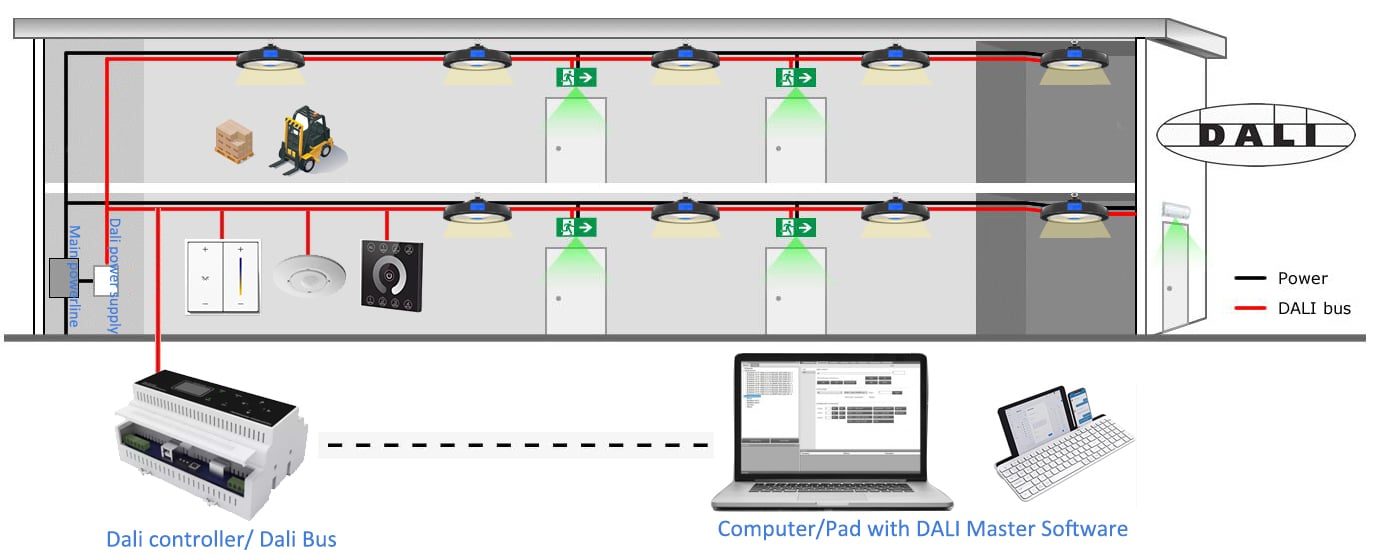
What functions can the high bay lightwith DALI control achieve?
- Turn on/off the light (according to single light/according to group light/according to scene light)
- Dimming/dimming (single/group/by scene)
- Detect bad lamps in Dali system
- Monitor the status of each light (Is it on? Is it bad or not? Lumen output ratio/Which group is the light in?)
- Adjust the CCT of high bay light(correlated color temperature)
- Control the lighting color of the LED light (not suitable for led high bay light)
High bay light with Zigbee control
The wired-based lighting control system has disadvantages such as troublesome wiring, rewiring for adding or subtracting equipment, poor system scalability, high system installation and maintenance costs, and poor mobility. Therefore, wireless communication technology is an ideal choice for realizing intelligent lighting systems. In recent years, short-range wireless communication technology has developed rapidly. The mainstream technologies include infrared technology, Bluetooth (Blue-tooth), Wi-Fi, UWB (Ultra-Wideband) and ZigBee technology. Zigbee technology is relatively mature, and the main characteristics of Zigbee technology are as follows: low power consumption, low speed, short delay, short distance, large capacity, and low cost. The requirements of the intelligent lighting system itself and the characteristics of ZigBee technology determine that ZigBee is the best solution to realize the wireless intelligent lighting system.
What is Zigbee?
System structure of ZigBee technology consists of three main components: ZigBee coordinator(Phone, computer with software), Router, and end device(LED high bay light).
For the lighting control system using Zigbee, the smart phone or the remote control is the coordinator, and they play the role of transmitting and sending control commands. The gateway accepts the instructions of the coordinator through ethernet or Wifi, and sends the instructions to the terminal device with zigbee controller, and finally the LED lights receive and execute the instructions. We can see that the gateway is the bridge between ZigBee coordinator and lamps. The schematic diagram of Zigbee smart lighting control is as follows:
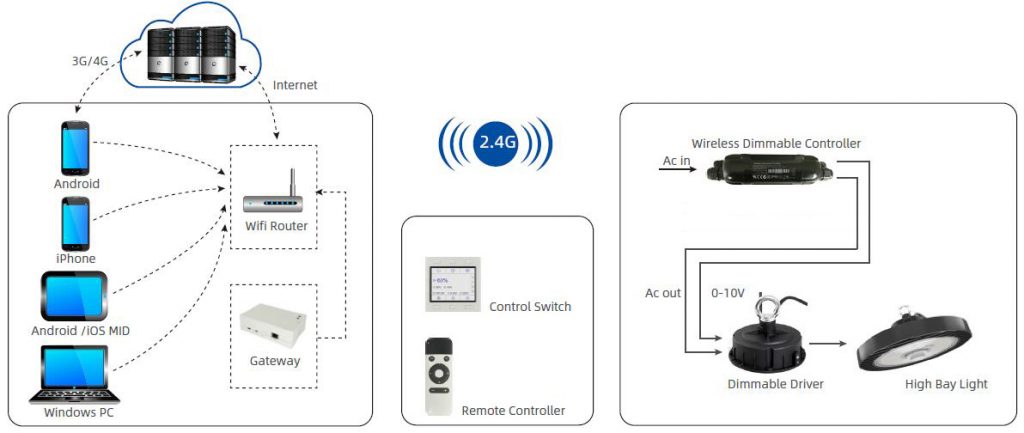
What functions can the high bay light and Zigbee control together achieve?
Firstly is the setting the Zigbee controlling system, below is the steps
- Zigbee high bay light intelligent lighting control specific operation
- Router connected to specific WIFI, Download “iLightsIn Pro” from App Store or Google Play.
- Power up the gateway and open app “iLightsIn Pro”. Press the “function key” of gateway, or search gateway in app.
- Login app with default account and password.
- Check more details regarding lighting control on User Guide.
- Do not power up more than 20 devices each time when adding new device in app.
ZGSM high bay lights with lighting control
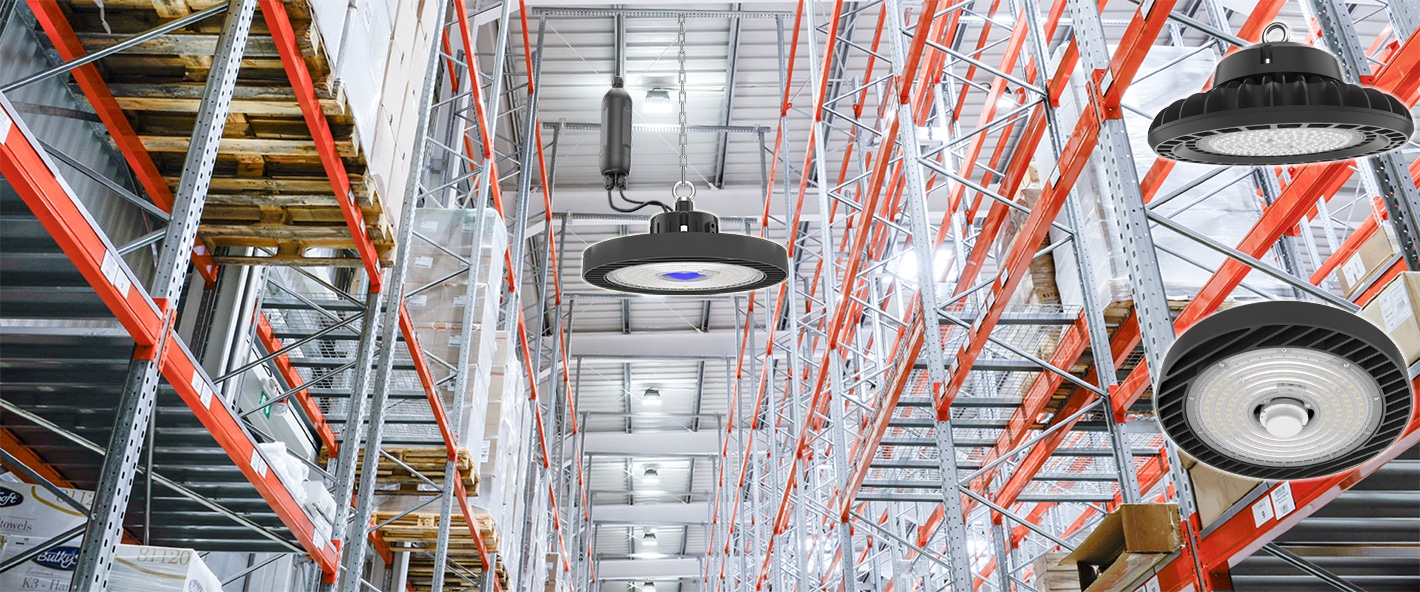
Summary
Smart lighting control is essential for buildings (warehouses, workshops, commercial centers) as it helps to reduce electricity bills and lighting efficiency. By adding smart lighting systems such as sensors, Dali dimming and Zigbee dimming, you can make your lighting scheme more flexible, efficient and economical. It is usually more convenient to add sensors to the fixture. Once installed, the unit automatically turns on or off based on sunlight, movement or infrared radiation. Using Dali or Zigbee, you can control single or a group of high bay lights through your computer, mobile phone or remote controller. The former has mature technology and relatively insufficient wiring. However the latter has developed rapidly in recent years, and the connection between the device and the controller is completed through wireless, and the operation is relatively simple.
Rated Products
Related Blogs
Related Cases
People also ask
Author introduction

Hello Customers,
My name is Taylor Gong, I’m the product manager of ZGSM Tech. I have been in the LED lights industry for more than 13 years. Good at lighting design, street light system configuration, and bidding technology support. Feel free to contact us. I’m happy to provide you with the best service and products.
Email: [email protected] | WhatsApp: +8615068758483

